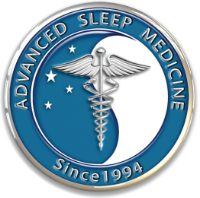
Here on the Sleep Better, Live Better Blog, we're hosting a series of guest posts to talk about alternatives to CPAP therapy for those who won't or can't use this method to treat their sleep apnea. Last week, we looked at a surgical alternative, bimaxillary advancement surgery.
This week, we're looking at an innovative procedure that aims to prevent the the airway closing up using electrical impulses like those used in pacemakers. Read on to learn more about Upper Airway Stimulation!
Upper Airway Stimulation: An Alternative to CPAP
By Eric J. Kezirian, MD, MPH
What is Upper Airway Stimulation?

Inspire Upper Airway Stimulation is an exciting, new treatment available for patients with obstructive sleep apnea who do not tolerate or do not benefit from positive airway pressure (PAP) therapy.
The tongue can play a major role in obstructive sleep apnea because during sleep, when the muscles in the body relax, the tongue can fall back to block breathing in the throat. The Upper Airway Stimulation system uses some of the same technology that was developed for heart pacemakers to stimulate the hypoglossal nerve, the nerve that controls tongue movement.
All components of the system are placed inside the body during a surgical procedure. There is a pulse generator placed on top of the chest (pectoralis) muscle and two leads. When the system is turned on during sleep using a remote control, the pulse generator sends a signal through a stimulation lead to the hypoglossal nerve in the neck. This moves the tongue forward and also can pull the soft palate (roof of the mouth) forward too, opening up the entire throat for breathing. A sensing lead measures breathing patterns so that the nerve stimulation occurs only when a patient is breathing in, which is the time that they need to open the throat for breathing. (For a visual animation of how this treatment works, you can watch this video.)
The surgery is performed under general anesthesia, and patients typically resume a normal diet on the night after surgery.
Advantages
1) It works very well for certain people.
One major advantage of Upper Airway Stimulation is that it works very well for the right group of patients, with studies showing that it is possible to identify the patients that will respond well. Research results have been published in major scientific journals, including the New England Journal of Medicine. Studies showed that 2 out of 3 patients who received the Upper Airway Stimulation device achieved a dramatic improvement or resolution of their sleep apnea. The nerve stimulation in the system does not wake up patients from sleep because the device is inside the body and therefore does not cause any pain.
2) It effectively prevents sleep apnea while in use.
An interesting part of the study examined patients that responded well to Upper Airway Stimulation. In half of them, the device was kept on at night, and they maintained the same benefit in treating their sleep apnea. In the other half, the device was kept off for a month and then turned back on; this half of the group returned to having sleep apnea when the device was off and then had their sleep apnea clear up when it was back on. This study importantly showed a clear benefit to treatment with the Upper Airway Stimulation system.
3) It has a quick recovery time.
Another important advantage is that the recovery is much easier than after many other sleep apnea surgeries.
Drawbacks
One disadvantage is that there are risks, just as there are with any surgery, although the risks are relatively low. In addition, the system is covered by many medical insurance companies but is somewhat expensive.
To learn more about inspire Upper Airway Stimulation, talk to your doctor about whether it might fit your treatment needs.
About the Author

Eric J. Kezirian, MD, MPH is a Professor of Otolaryngology – Head & Neck Surgery at the Keck School of Medicine of USC. He is an international leader in the surgical evaluation and treatment of obstructive sleep apnea and snoring and the only surgeon in Southern California with a primary clinical and research focus in sleep surgery. Dr. Kezirian is President of the International Surgical Sleep Society, the world’s preeminent organization in the field. After graduating magna cum laude from Harvard College, he obtained a Master of Science degree from the University of Oxford, his medical degree from the University of Pennsylvania, and a Master of Public Health degree at the University of Washington, where he completed otolaryngology residency training before a fellowship in sleep surgery at Stanford University. Dr. Kezirian’s research has addressed the most important questions in sleep surgery, and he utilizes a wide array of procedures and the latest research, including his own, to provide his patients with the most appropriate, effective treatment plan.



